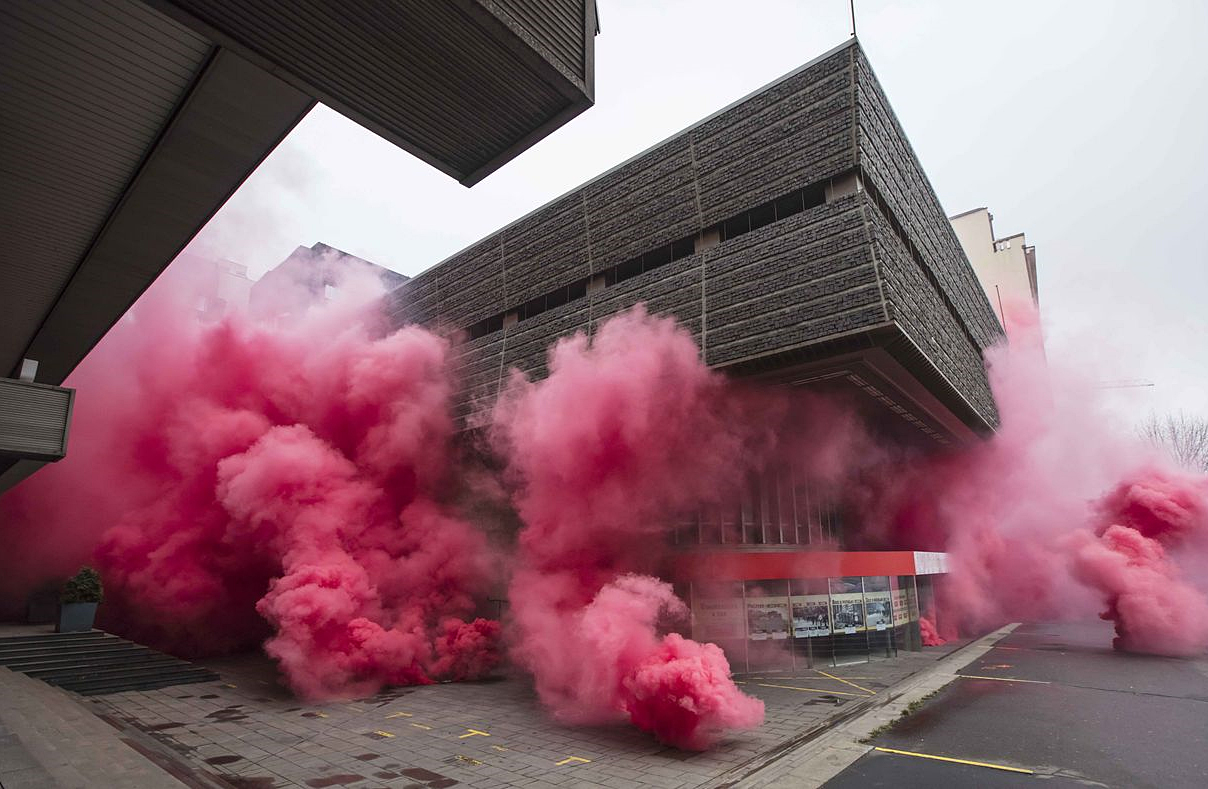
The Building Office of Prague 2 has approved the demolition of the Transgas building complex
 |
Prague - The Building Authority of Prague 2 has approved the demolition of the Transgas building complex on Vinohradská Boulevard. Participants in the proceedings can appeal the decision to the magistrate of the capital city within 15 days. This is stated in the authority's decision posted on the official bulletin board of the city district. The owner of the complex, HB Reavis, intends to build several new structures on the site. The intention to remove buildings, which the state refused to protect as monuments, has sparked criticism from some experts.
The document lists the individual objects whose demolition the authority has approved, including tower structures, shops, and substations, the dispatch center, shops, a former fountain, an underground fire tank, and underground collectors of the complex. Based on the issued permit, the owner will have two years to demolish the complex of buildings from the date of legal validity, meaning from the resolution of any appeals. Participants in the proceedings can file an appeal to the magistrate.
The building owner notified the authority in February 2016 of its plans to demolish the complex. All necessary documents were submitted with the application last July. The documents included statements from the departments of the capital city magistrate, firefighters, the public transport company, and statements from the managers and owners of technical equipment networks. The Building Authority also considered whether the demolition would have a negative impact on nature and the landscape and concluded that it would not.
HB Reavis plans to build a multifunctional building on the cleared site designed by the architectural studio Jakub Cigler Architekti. According to earlier statements from the developer, it could be completed by the beginning of 2021.
The former Central Gas Dispatch Center Transgas and the Ministry of Fuel and Energy complex is located just above Wenceslas Square and beneath the Czech Radio building. It is the work of the team Jindřich Malátek, Ivo Loos, Zdeněk Eisenreich, and Václav Aulický. The intention to demolish the complex of buildings has sparked debates about the architecture from the socialist era, which has both advocates and critics.
The Club for Old Prague attempted to protect the complex from demolition, proposing to the Ministry of Culture to declare it a monument. This is now a commonly used route to prevent the demolition of a building. The Prague branch of the National Heritage Institute (NPÚ) did not recommend the declaration, stating that "the complex does not create an urban environment and materially and in scale damages the urban conservation area." The Ministry did not declare the buildings as monuments.
Then-Minister of Culture Daniel Herman (KDU-ČSL) initiated a review of the decision in May 2017, which he halted a few months later. His decision noted among other things that the properties are poorly integrated into the surroundings, "the details of the buildings, facades, and railings are out of human scale," that "no significant cultural-historical event" occurred in the complex, or that the buildings are not, unlike the Ingstavu or Kotva building, significant examples of brutalism.
Proponents of the building evaluate it as an excellent example of stylistically synthetic architecture from the 1970s, combining elements of brutalism, technicism, and postmodernism, but also as a unique realization of postmodern urbanism in Czech territory.
The English translation is powered by AI tool. Switch to Czech to view the original text source.
0 comments
add comment
Related articles
1
02.12.2019 | Developer will not sell the land after Transgas, wants to build again himself
0
26.03.2019 | The demolition of Transgas began with the removal of the roof covering
0
19.03.2019 | Demolition of the Transgas buildings will begin at the turn of March and April
0
06.02.2019 | HB Reavis will sell several projects in Prague, including Transgas
6
04.02.2019 | The Transgas buildings are among the most striking constructions of the 1970s in Prague
0
04.02.2019 | The owner of the Prague Transgas file can demolish the buildings
1
16.08.2018 | The building authority will decide on the demolition of Transgas no earlier than a week from now
1
02.08.2018 | Experts are urging authorities not to permit the demolition of the Transgas buildings
13
26.07.2018 | The owner of the Transgas buildings in Prague has requested their demolition
2
21.11.2017 | The Transgas buildings will not be a monument, and the owner can demolish them
4
13.12.2016 | Transgas on Vinohradská Street in Prague is not a cultural monument
0
17.03.2016 | The ugliest architecture in Prague - Transgas Building










